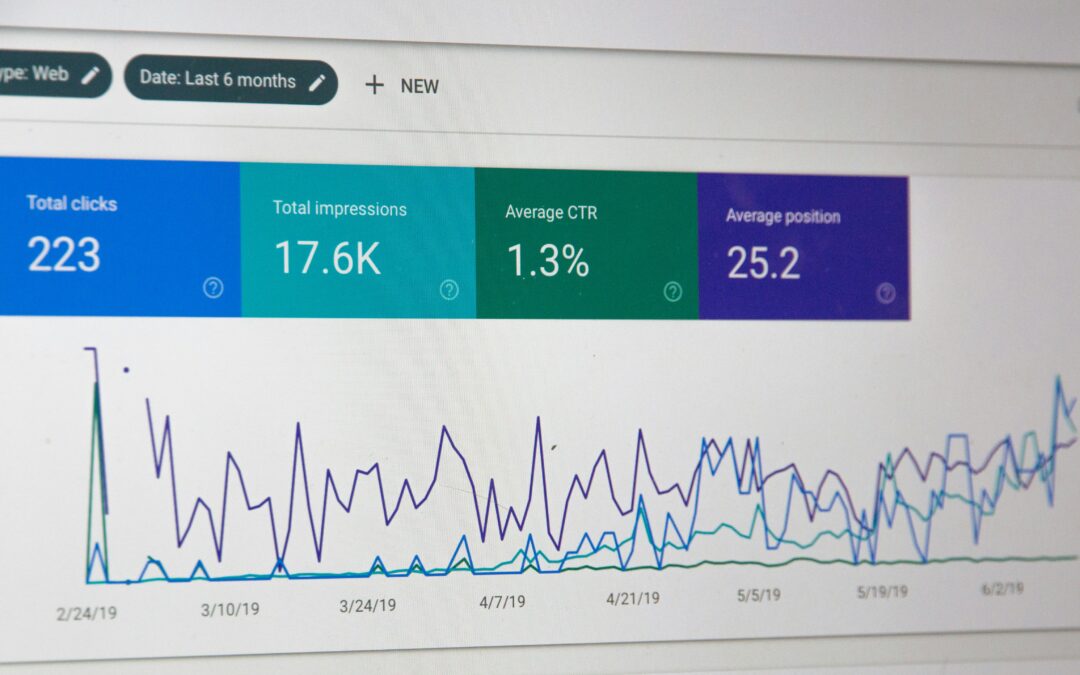.
About
AB PlasTech
AB PlasTech is a technology site which aims to provide its visitors with all that they need and want to know about the tech world. We are extremely passionate about technology and the way it revolutionizes everyday lives and we want to share this passion with you.
Welcome to
AB PlasTech!
We welcome you to enter a world of innovation, exciting new technology, and advanced systems. We aim to provide you with latest news and updates on your favorite gadgets and devices.
Our mission is to be the number.1 provider of tech related news and information worldwide.
Innovative Plastics

Thermoplastics
These are the kind of plastics which can withstand high temperatures. They can be melted and returned to their original state quite easily just like an ice cube can be melted and frozen again. Thermoplastics are produced in two steps. In the first step small pellets are formed…

Thermosets
These are usually produced and immediately formed into products at the same time but can not be returned into their original state again. These are heated and set into a shape once and afterward, couldn’t be taken back to their original state like in the case of thermoplastics.

Biodegradable
These are made from corn starch and traditional petrochemicals and engineering in such a way that they can break down quickly. These are environment-friendly plastics which are used in the daily routine but will not harm the nature.
Polymer-Plastic Technology and Engineering
Polymers are large molecules that are composed of a combination of small molecules called monomers. They have a wide range of properties and play an essential role in our everyday lives. Polymers are generally of two main types – Synthetic and Natural.
Plastic is also a polymer. Plastic consists of a wide range of synthetic and semi-synthetic organic compounds that are malleable in nature. Plastics are commonly derived from petrochemicals and are made from renewable materials including cellulosic and polylactic acid which comes from cotton liners and corn respectively. Plastics are specially engineered to hold some specific properties out of which plasticity is the general property which allows the plastic to irreversibly deform without breaking.
Latest Posts

How IPTV is Bringing 4K and Ultra HD to Your Living Room
In recent years, the way we watch television has evolved dramatically. Gone are the days when we were limited to cable or satellite TV. Now, IPTV (Internet Protocol Television) is leading the charge in delivering high-quality streaming content, including 4K and Ultra HD, straight to our living rooms. This shift has given viewers access to stunning visuals and richer experiences, making television more immersive and enjoyable than ever before.
What is IPTV and Why It’s Changing the Game?
An IPTV subscription allows you to stream TV shows, movies, and live events using an internet connection, rather than relying on traditional broadcast methods like cable or satellite. The result is a more flexible and customizable viewing experience, where you can choose what to watch, when to watch, and in many cases, how you want to experience it. IPTV’s ability to deliver content on-demand, along with live broadcasts, has made it a popular choice for modern households.
One of the most exciting benefits of IPTV is its support for 4K and Ultra HD content. These high-definition formats provide incredibly sharp images and vibrant colors, offering a visual upgrade that transforms how we watch TV. With more and more content being produced in 4K, IPTV is a perfect platform to enjoy these advancements in television technology.
The 4K and Ultra HD Experience
If you’ve ever watched a program in 4K, you know just how stunning the visuals can be. With four times the resolution of Full HD, 4K content offers an unparalleled level of detail. Whether it’s a nature documentary showcasing the finest details of an animal’s fur or an action movie with explosive special effects, 4K truly elevates the viewing experience.
Ultra HD goes even further by enhancing contrast, color depth, and brightness. Combined with a large screen, this type of high-quality streaming makes you feel as if you’re part of the action. IPTV providers are increasingly offering access to these formats, allowing viewers to enjoy their favorite shows, movies, and live events in the highest quality available.
Sports, movies, and gaming content are where 4K and Ultra HD really shine. Sports enthusiasts can follow their favorite games with razor-sharp clarity, while movie buffs can enjoy cinematic experiences from their living rooms. Even gaming has joined the 4K revolution, as IPTV integrates with gaming platforms to provide a smoother, more immersive experience.
Why IPTV is Ideal for 4K and Ultra HD
IPTV is perfectly suited for streaming 4K and Ultra HD content because it operates over an internet connection. As internet speeds increase and technology advances, it’s becoming easier for IPTV services to deliver content in these high-definition formats without buffering or interruptions. Many IPTV services now offer dedicated 4K channels, allowing viewers to explore a wide range of content optimized for these advanced resolutions.
Moreover, IPTV gives users control over what they want to watch, whether it’s a live event or on-demand content. This flexibility means you can enjoy 4K shows at your own pace, without being tied to a TV schedule. As more content creators invest in 4K production, IPTV platforms are quickly becoming the go-to solution for people looking to experience top-quality visuals.
IPTV and Gaming
IPTV’s influence isn’t just limited to movies and TV shows—it has also made a significant impact on the gaming world. With the integration of IPTV platforms and gaming services, users can stream gameplay and video game content in high-definition formats.
Getting the Most Out of IPTV
To make the most of IPTV and its ability to deliver 4K and Ultra HD content, you’ll want to ensure you have the right setup. First, a reliable high-speed internet connection is essential. Streaming 4K requires substantial bandwidth, so investing in a fast connection will prevent any interruptions in your viewing experience.
Next, you’ll need a 4K-capable television or monitor to fully appreciate the quality that IPTV offers. Many smart TVs are already equipped to handle 4K content, making it easier than ever to upgrade your viewing experience. Finally, choose an IPTV provider that supports 4K channels or on-demand content so you can enjoy the best picture quality available.
A Brighter Future for TV
IPTV is rapidly becoming the future of television, offering high-definition experiences that make watching TV more enjoyable than ever. With its support for 4K and Ultra HD, IPTV is bringing stunning visuals into homes around the world, changing the way we experience content. Whether it’s watching a movie, following a sports game, IPTV allows viewers to enjoy the highest-quality entertainment available today.

Gangnam’s Hottest Boutiques: Where Fashion and Fun Collide
Gangnam, Seoul’s stylish heart, is more than just a place—it’s a vibe. Known globally thanks to a catchy tune and dance, Gangnam has so much more to offer beyond its pop culture fame. It’s a fashion lover’s paradise, where the latest trends aren’t just followed—they’re created. The district’s boutiques are a testament to this, offering a mix of high-end luxury and street-style chic that’s irresistible.
Walking through the bustling streets of Gangnam, you can’t help but be drawn in by the window displays of these boutiques. Each one seems to have its own personality, making shopping in Gangnam an adventure in itself. Whether you’re after the latest designer pieces or looking for something a bit more edgy, Gangnam’s got it all.
Boutique Bliss
One of the first stops for any fashion enthusiast has to be **MUE**, a boutique that perfectly blends elegance with modern trends. MUE offers a curated selection of clothes and accessories from both Korean designers and international brands. The layout is sleek, the clothes are displayed like art, and the atmosphere is nothing short of luxurious. It’s the kind of place where you can find that perfect statement piece that will turn heads.
Just around the corner, **Rare Market** is a playground for those who love fashion with a twist. Founded by the daughter of renowned fashion designer Woo Young Mi, Rare Market is where you go to discover the unexpected. The boutique is known for its eclectic mix of styles and brands, from avant-garde to streetwear. It’s not just about what’s on the racks but also about the entire shopping experience. The store’s vibrant and quirky design makes it a must-visit for anyone looking to add some flair to their wardrobe.
For those who lean more towards minimalism, **Beaker** is the go-to. This boutique is all about understated elegance, with a focus on simple yet sophisticated pieces. The store carries a mix of local and international brands, offering everything from sleek outerwear to cozy knits. Beaker’s clean lines and neutral tones make it a favorite among those who appreciate the beauty of simplicity.
Fashion and Fun
But Gangnam isn’t just about shopping; it’s about the full experience. After a day of exploring the boutiques, there’s no better way to unwind than by heading to one of the area’s famous karaoke bars, for example https://mondesmediterraneens.org. Karaoke in Korea is not just about singing—it’s about having fun with friends, letting loose, and creating memories.
**Su Noraebang** is one of Gangnam’s most popular karaoke spots. With its sleek, modern interiors and a massive selection of songs, it’s the perfect place to continue the fun after a day of shopping. The private rooms are decked out with state-of-the-art sound systems and comfortable seating, making it an ideal spot to belt out your favorite tunes with friends. Whether you’re a seasoned performer or just in it for laughs, Su Noraebang adds a perfect touch of entertainment to your Gangnam adventure.
If you’re looking for something a bit more luxurious, **Coin Karaoke** offers a high-end karaoke experience. Each room is equipped with plush seating, stylish décor, and an extensive playlist that covers everything from K-pop to international hits. It’s a popular choice among both locals and tourists who want to enjoy a more sophisticated night out. Singing your heart out in Coin Karaoke is a perfect way to round off your day in Gangnam, leaving you with fond memories of both fashion and fun.
The Perfect Day in Gangnam
Gangnam is more than just a shopping destination—it’s a place where fashion meets entertainment in the most exciting ways. The boutiques here aren’t just about clothes; they’re about expressing yourself and finding pieces that resonate with your style. And after you’ve shopped to your heart’s content, the karaoke bars offer the perfect way to let loose and enjoy the vibrant energy of this trendy district.
So, whether you’re a fashionista hunting for the latest trends, or just someone looking to enjoy a fun day out, Gangnam has something for everyone. With its unique mix of high-end boutiques and lively entertainment spots, it’s no wonder that this district continues to be a top destination for both locals and visitors alike. The next time you’re in Seoul, don’t miss out on the chance to experience the best of Gangnam—where fashion and fun go hand in hand.

Defining an AAA Game: The Hallmarks of Excellence and Production Quality
In the gaming industry, the term “AAA game” is synonymous with high-quality production, impressive visuals, and immersive gameplay experiences. These games represent the pinnacle of what the industry has to offer, captivating millions of players worldwide with their attention to detail, expansive worlds, and engaging narratives. But what exactly defines an AAA game? Let’s explore the key features and production values that set these games apart from the rest.
AAA games are the blockbuster titles of the video game industry. They are developed by large teams, often comprising hundreds of skilled professionals, and backed by substantial budgets that rival those of major Hollywood movies. These games are designed to appeal to a broad audience, delivering cutting-edge graphics, complex gameplay mechanics, and richly detailed environments. The investment in time, talent, and technology results in a polished product that stands out in the gaming market.
AAA games are typically produced by well-known studios and published by major companies. These titles are expected to perform well both critically and commercially, and they often do, thanks to the resources and expertise dedicated to their development.
High Production Values
One of the defining characteristics of an AAA game is its high production value. From the quality of the graphics to the depth of the story, every aspect of the game is meticulously crafted to create an immersive experience. AAA games often feature state-of-the-art graphics, utilizing the latest technology to create realistic characters, environments, and special effects. This visual fidelity draws players into the game world, making every interaction feel lifelike and engaging.
Sound design is another critical component of an AAA game. The best AAA titles feature professional voice acting, dynamic soundtracks, and detailed audio effects that enhance the overall atmosphere. Whether it’s the rustle of leaves in a forest or the distant echo of footsteps in a cavern, the audio in an AAA game adds layers of realism and emotion to the experience.
Immersive Storytelling
AAA games are renowned for their immersive storytelling, often featuring complex narratives that rival those of the best films and novels. These games typically offer deep, engaging stories with well-developed characters and intricate plotlines. The narrative is often supported by cinematic cutscenes, which use high-quality animation and voice acting to bring the story to life.
In addition to a compelling main storyline, many AAA games offer branching narratives, allowing players to make choices that affect the outcome of the game. This interactivity gives players a sense of agency and makes the experience more personal and impactful.
Expansive Worlds and Detailed Environments
Another hallmark of AAA games is their expansive worlds and detailed environments. These games often feature open-world designs that allow players to explore vast landscapes filled with quests, hidden secrets, and dynamic events. The environments are meticulously crafted, with attention to detail that makes each location feel unique and lived-in.
Whether it’s a sprawling cityscape, a dense jungle, or a mysterious dungeon, the environments in AAA games are designed to captivate players and encourage exploration. The sheer scale of these worlds, combined with the level of detail, creates a sense of wonder and immersion that few other games can match.
Advanced Gameplay Mechanics
AAA games are known for their advanced gameplay mechanics, which are designed to be both challenging and accessible. These games often introduce innovative systems that add depth to the gameplay, whether it’s through complex combat mechanics, intricate puzzles, or detailed character customization options. The goal is to create a gameplay experience that is engaging, rewarding, and, most importantly, fun.
The best AAA games also focus on player feedback, continuously refining and improving mechanics based on player input. This iterative process ensures that the final product is balanced, polished, and enjoyable for a wide range of players.
Strong Community and Support
AAA games often come with robust post-launch support, including regular updates, downloadable content (DLC), and active community engagement. Developers of AAA titles typically invest in long-term support for their games, adding new content and features to keep the player base engaged. This commitment to ongoing improvement and community interaction is a key aspect of what makes an AAA game stand out.
Many AAA games also foster strong online communities, where players can share experiences, discuss strategies, and participate in multiplayer modes. These communities are a testament to the lasting appeal and quality of AAA titles.
The Gold Standard in Gaming
AAA games represent the gold standard in the gaming industry. They are the result of extensive planning, significant investment, and the collaboration of talented professionals. These games push the boundaries of what is possible, delivering experiences that are visually stunning, emotionally resonant, and endlessly entertaining.
For players, AAA games are more than just entertainment—they are journeys into meticulously crafted worlds filled with stories, challenges, and wonders waiting to be discovered. As the industry continues to evolve, AAA games will undoubtedly remain at the forefront, setting new standards for excellence in gaming.

Where to Find the Best Cocktails in Gangnam
Gangnam, one of Seoul’s most vibrant districts, is not only known for its fashion, entertainment, and nightlife but also for its impressive cocktail scene. Whether you’re looking for a classic cocktail or a modern mix, Gangnam’s 풀싸롱 bars have something to offer everyone. Here’s a guide to some of the best places to enjoy cocktails in this trendy area, including some great spots to combine a night of karaoke with your favorite drinks.
Alice Cheongdam
Alice Cheongdam is a hidden gem in Gangnam, offering a unique and whimsical cocktail experience. Located behind a secret door in a flower shop, this speakeasy-style bar is known for its creative cocktails and sophisticated atmosphere. The bartenders at Alice Cheongdam are true artists, crafting drinks that are as beautiful as they are delicious. Signature cocktails like the “Alice in Wonderland” are a must-try, blending unexpected ingredients to create unforgettable flavors.
Le Chamber
Le Chamber, another speakeasy in Gangnam, offers a luxurious and exclusive atmosphere perfect for a night out. This bar is hidden behind a bookshelf and features elegant décor, top-notch service, and an extensive cocktail menu. Le Chamber’s skilled mixologists are renowned for their attention to detail and ability to create perfect cocktails tailored to your taste. The “Old Cuban” and “Earl Grey Martini” are just a couple of the standout options on their menu.
Mixology Seoul
For those who appreciate the art of cocktail making, Mixology Seoul is the place to be. This bar focuses on the science of mixology, using high-quality ingredients and innovative techniques to create one-of-a-kind drinks. The interior is chic and modern, providing a perfect backdrop for enjoying sophisticated cocktails. The “Smoky Old Fashioned” and “Molecular Margarita” showcase the creativity and precision that go into every drink at Mixology Seoul.
The Lounge & Bar at Park Hyatt Seoul
For a more upscale experience, head to The Lounge & Bar at Park Hyatt Seoul. Located on the 24th floor, this bar offers stunning views of the city along with a refined cocktail menu. The bartenders here are known for their classic cocktails, as well as their own innovative creations. Enjoying a “Seoul Sour” or a “Ginseng Martini” while taking in the panoramic views of Gangnam is an experience not to be missed.
Charles H.
Charles H. is a classy speakeasy located in the Four Seasons Hotel Seoul. It draws inspiration from the glamorous Prohibition era, offering an intimate and stylish setting for enjoying expertly crafted cocktails. The menu features both classic and contemporary drinks, with a special focus on flavors from around the world. Signature cocktails like the “Penicillin” and the “Bees Knees” are highly recommended.
Once in a Blue Moon
For jazz enthusiasts and cocktail lovers alike, Once in a Blue Moon is a perfect choice. This bar combines live jazz performances with an excellent cocktail menu, creating a relaxing and sophisticated atmosphere. The bartenders at Once in a Blue Moon are experts in both classic and modern cocktails, ensuring there’s something for everyone. The “Mint Julep” and “Blue Moon” are among the favorites here.
Megabox Boutique M
Combining cocktails and cinema, Megabox Boutique M offers a unique experience in Gangnam. This boutique cinema has a stylish bar where you can enjoy a range of craft cocktails before or after your movie. The cozy and elegant setting makes it a great spot to relax and unwind with a drink in hand. Try the “Cinema Negroni” or the “Movie Star Martini” for a delightful twist on classic cocktails.
Su Noraebang
No night out in Gangnam would be complete without some karaoke. Su Noraebang is one of the best karaoke bars in the area, offering private rooms and a fantastic selection of songs. Along with singing your heart out, you can also enjoy a range of delicious cocktails. The friendly atmosphere and great drinks make it a perfect place to end your night on a high note.
Luxury Su Noraebang
For a more upscale karaoke experience, Luxury Su Noraebang offers stylish rooms and excellent service. This karaoke bar also boasts a wide variety of cocktails, ensuring you can enjoy a premium drink while you sing. Signature cocktails like the “Gangnam Glamour” and “K-Pop Cooler” are popular choices here.
Conclusion
Gangnam’s cocktail scene is as diverse and exciting as the district itself. From hidden speakeasies and upscale hotel bars to unique concept venues and lively karaoke bars, there’s no shortage of places to enjoy a perfectly crafted cocktail. So next time you’re in Gangnam, explore these top spots and experience the best cocktails the area has to offer. Cheers!

Karaoke and Mental Health: The Therapeutic Benefits of Singing in South Korea
Karaoke is more than just a popular pastime in South Korea; it’s a cherished cultural activity that brings people together and offers significant mental health benefits. From the bustling streets of Seoul to small towns across the country, karaoke rooms, known as “noraebang,” provide a space for individuals to express themselves, relieve stress, and enjoy social interactions. Let’s explore the therapeutic benefits of karaoke and why it has become a vital part of South Korean life.
Stress Relief and Emotional Expression
One of the primary benefits of karaoke is its ability to relieve stress. Singing your favorite songs at the top of your lungs can be an incredibly cathartic experience. It allows individuals to release pent-up emotions and tension, providing an outlet for feelings that might otherwise remain bottled up. In a high-pressure society like South Korea, where work and academic demands can be intense, 강남하드코어 noraebang offers a valuable escape.
Karaoke also provides a safe space for emotional expression. Whether you’re celebrating a joyous occasion or working through sadness, the act of singing can help process these emotions. The lyrics and melodies often resonate on a personal level, enabling singers to connect with their feelings and articulate them through music.
Social Connection and Community Building
Noraebang is not just about singing alone; it’s a social activity that strengthens bonds between friends, family, and colleagues. Sharing a karaoke room fosters a sense of camaraderie and belonging. The group setting encourages interaction, laughter, and support, enhancing social connections that are crucial for mental well-being.
In South Korea, where collectivism is a core cultural value, the communal aspect of noraebang is particularly significant. It offers an inclusive environment where everyone, regardless of their singing ability, can participate and feel valued. This inclusivity helps to reduce feelings of isolation and loneliness, promoting a sense of community and mutual support.
Confidence Boost and Personal Growth
Performing in front of others, even in a casual karaoke setting, can boost confidence and self-esteem. The supportive and non-judgmental atmosphere of a noraebang encourages individuals to step out of their comfort zones and try something new. Each song sung and each cheer received from friends helps build self-assurance and a positive self-image.
For those who may be shy or introverted, karaoke can be a transformative experience. It provides an opportunity to overcome social anxieties and gain confidence in public speaking and performance. This personal growth extends beyond the karaoke room, positively impacting other areas of life.
Cognitive Benefits and Memory Enhancement
Engaging in karaoke can also have cognitive benefits. Singing involves memorizing lyrics, melodies, and rhythms, which exercises the brain and improves memory. This mental stimulation can be particularly beneficial for older adults, helping to keep their minds active and sharp.
Moreover, the act of singing and following along with music can enhance concentration and focus. These cognitive benefits make karaoke a fun and effective way to maintain mental agility.
Music Therapy and Mental Health
The therapeutic power of music is well-documented, and karaoke is a form of music therapy that is accessible to everyone. Singing releases endorphins, the body’s natural feel-good chemicals, which can alleviate symptoms of depression and anxiety. The rhythmic and melodic aspects of music have a calming effect on the mind, promoting relaxation and reducing stress levels.
In South Korea, where mental health issues can sometimes be stigmatized, noraebang offers an informal yet powerful form of therapy. It provides a non-clinical setting where individuals can enjoy the benefits of music therapy without the need for formal treatment.
Embracing the Joy of Karaoke
Karaoke has firmly established itself as a beloved activity in South Korea, thanks to its numerous mental health benefits. From stress relief and emotional expression to social connection and cognitive enhancement, the positive impact of singing in noraebang is undeniable. It offers a joyful and inclusive experience that brings people together and fosters mental well-being.
As we continue to recognize the importance of mental health, the therapeutic benefits of karaoke serve as a reminder of the simple yet profound ways in which music and community can enhance our lives. So, the next time you find yourself in a noraebang, embrace the moment, sing your heart out, and enjoy the many mental health benefits that come with it.

Sustainable Development Trends in Singapore’s Real Estate Boom
Singapore’s real estate sector is experiencing a significant boom, and sustainable development is at the forefront of this growth. As urbanization continues at a rapid pace, the focus on eco-friendly practices and green building solutions is more crucial than ever. With initiatives aimed at reducing environmental impact, developers are embracing innovative techniques to create a greener future for the city-state. Here’s a look at some of the sustainable development trends shaping Singapore’s real estate boom, highlighting the efforts of platforms like New Launch condo Portal in promoting new, eco-conscious condos.
Green Building Certifications
One of the most prominent trends in Singapore’s real estate is the adherence to green building certifications such as the Building and Construction Authority (BCA) Green Mark Scheme. This initiative encourages developers to design and construct buildings that are energy-efficient, water-efficient, and environmentally friendly. Properties that achieve higher Green Mark ratings are recognized for their sustainability efforts, which include features like solar panels, rainwater harvesting systems, and energy-efficient lighting and appliances.
Innovative Architectural Designs
Developers in Singapore are increasingly incorporating innovative architectural designs that prioritize sustainability. These designs include features such as vertical gardens, green roofs, and natural ventilation systems. Vertical gardens not only enhance the aesthetic appeal of buildings but also improve air quality and reduce urban heat island effects. Green roofs, on the other hand, provide insulation, reduce rainwater runoff, and create habitats for local wildlife.
Smart Technology Integration
The integration of smart technology is revolutionizing how buildings operate, making them more efficient and sustainable. Smart systems can monitor and manage energy usage, lighting, and temperature, ensuring optimal performance while minimizing waste. These technologies also enable residents to monitor their energy consumption in real-time, promoting more conscious use of resources. New Launch Portal highlights several new condo projects that feature cutting-edge smart home systems, appealing to environmentally conscious buyers.
Use of Sustainable Materials
The choice of building materials plays a significant role in sustainable development. In Singapore, there is a growing trend towards using sustainable materials such as recycled steel, low-VOC paints, and sustainable timber. These materials reduce the environmental footprint of construction and contribute to healthier indoor environments. Additionally, the use of prefabricated building components is on the rise, which minimizes construction waste and improves efficiency.
Enhancing Public Spaces and Biodiversity
Developers are also focusing on enhancing public spaces and promoting biodiversity within their projects. This includes creating parks, community gardens, and green corridors that connect urban areas with nature. Such initiatives not only provide recreational spaces for residents but also support local wildlife and improve overall urban biodiversity. Projects that incorporate these elements are often featured on New Launch Portal, showcasing the growing demand for living spaces that prioritize green living.
Energy and Water Efficiency
Maximizing energy and water efficiency is a key component of sustainable real estate development. Buildings are being equipped with advanced systems to reduce energy consumption and promote the use of renewable energy sources. Solar panels, energy-efficient HVAC systems, and LED lighting are becoming standard features in new developments. Water-saving fixtures and greywater recycling systems are also being implemented to reduce water usage and promote sustainability.
Community Engagement and Education
Sustainable development is not just about building green; it’s also about fostering a culture of sustainability among residents. Developers are engaging with communities to promote sustainable living practices. This includes organizing educational programs, workshops, and community events focused on sustainability. By raising awareness and encouraging participation, these initiatives help build a community that values and practices eco-friendly habits.
The Role of New Launch Portal
New Launch Portal plays a crucial role in promoting sustainable real estate in Singapore. As a comprehensive platform for new condo launches, it provides detailed information about projects that prioritize green building practices and sustainability. Prospective buyers can easily find eco-friendly condos that align with their values, ensuring that sustainability is a key consideration in their purchasing decisions. By highlighting these projects, New Launch Portal supports the shift towards greener living in Singapore’s booming real estate market.
A Greener Future for Singapore
Singapore’s commitment to sustainable development in its real estate sector is paving the way for a greener future. The trends outlined above demonstrate how the industry is evolving to meet the challenges of urbanization while prioritizing environmental responsibility. With platforms like New Launch Portal showcasing the best in sustainable living, the city-state is well on its way to becoming a global leader in eco-friendly urban development. As these practices become more widespread, Singapore can look forward to a future where growth and sustainability go hand in hand.

The Heritage and Spiritual Tranquility of Lin San Temple Columbarium in Singapore
Nestled in the serene surroundings of Singapore, Lin San Temple Columbarium is a place where heritage and spiritual tranquility meet. This sacred site offers a peaceful haven for those seeking solace and connection with their ancestors, providing a meaningful space for reflection and remembrance.
A Legacy of Spiritual Heritage
Lin San Temple has a rich history that dates back decades, serving as a beacon of cultural and spiritual significance in Singapore. The temple’s architecture and design reflect traditional Chinese aesthetics, showcasing intricate carvings and ornate decorations that tell stories of ancient wisdom and spiritual teachings. Every corner of the temple is imbued with a sense of reverence and respect for the past, creating an environment that honors the heritage of its community.
A Peaceful Sanctuary
The columbarium at Lin San Temple is a peaceful sanctuary where families can honor their loved ones. The tranquil ambiance of the temple grounds, with its meticulously maintained gardens and calming water features, offers a comforting backdrop for contemplation and prayer. The serene environment is designed to provide visitors with a sense of peace and connection, making it easier to find solace in their moments of remembrance.
Spiritual Practices and Rituals
Lin San Temple is not just a resting place but also a vibrant center for spiritual practices and rituals. Regular ceremonies and events are held to honor ancestors and celebrate important cultural festivals. These practices are deeply rooted in tradition, helping to keep the cultural heritage alive and vibrant. Participating in these rituals offers a profound sense of connection to the past and reinforces the cultural bonds that tie the community together.
Community and Support
One of the most remarkable aspects of Lin San Temple Columbarium is the strong sense of community it fosters. Families and individuals come together to support one another, sharing their experiences and finding comfort in their shared traditions. The temple’s staff and volunteers are dedicated to providing compassionate support, ensuring that every visitor feels welcome and cared for. This sense of community extends beyond the physical space, creating lasting bonds among those who visit.
Modern Amenities with Traditional Charm
While Lin San Temple Columbarium respects and preserves its traditional roots, it also embraces modern amenities to meet the needs of its visitors. The facilities are thoughtfully designed to provide comfort and convenience while maintaining the temple’s historical charm. This blend of old and new ensures that the columbarium can serve its community effectively while honoring its cultural heritage.
A Place of Reflection and Connection
Visiting Lin San Temple Columbarium offers a unique opportunity to reflect on life and connect with something greater. The peaceful surroundings and spiritual ambiance provide the perfect setting for introspection and meditation. Whether you are there to pay respects to a loved one or to find a moment of peace in a busy life, the temple offers a space where you can connect with your inner self and the spiritual heritage that surrounds you.
Continuing the Legacy
Lin San Temple Columbarium is committed to continuing its legacy of cultural and spiritual significance. By preserving traditional practices and fostering a sense of community, the temple ensures that future generations can also find peace and connection here. The ongoing efforts to maintain and enhance the temple’s facilities reflect a deep respect for the past and a commitment to the future.
A Lasting Impression
The experience of visiting Lin San Temple Columbarium leaves a lasting impression. The combination of heritage, spirituality, and community creates a unique environment that resonates with visitors long after they leave. It is a place where memories are cherished, traditions are honored, and spiritual tranquility is found.
In a fast-paced world, Lin San Temple Columbarium stands as a testament to the enduring power of heritage and spiritual peace. It is a sanctuary where the past is respected, the present is cherished, and the future is embraced with hope and reverence. Whether you seek a place for remembrance, reflection, or connection, Lin San Temple Columbarium offers a haven of peace and spiritual comfort in the heart of Singapore.

Discover the Joys of Living at Norwood Grand
Living at Norwood Grand offers a delightful blend of comfort, convenience, and community. This vibrant residential complex is designed to provide an exceptional living experience, complete with modern amenities, beautifully maintained grounds, and a warm, welcoming atmosphere. Here’s an in-depth look at what makes Norwood Grand a fantastic place to call home.
Spacious and Stylish Apartments
Norwood Grand offers a range of apartment layouts to suit various needs and preferences. Each unit is thoughtfully designed with modern finishes, high-quality materials, and ample natural light. The apartments feature spacious living areas, well-equipped kitchens, and comfortable bedrooms, making it easy to create a cozy and inviting home. Whether you’re a young professional, a family, or a retiree, you’ll find a layout that fits your lifestyle.
Amenities for Every Lifestyle
The amenities at Norwood Grand condo are designed to enhance your living experience. The state-of-the-art fitness center is perfect for maintaining an active lifestyle, while the sparkling swimming pool provides a refreshing escape during the warmer months. For those who enjoy outdoor activities, the beautifully landscaped gardens and walking paths offer a serene environment for relaxation and exercise.
Residents can also take advantage of the community clubhouse, which serves as a social hub for events and gatherings. With comfortable seating, a well-appointed kitchen, and plenty of space, it’s an ideal spot for hosting parties, meetings, or simply catching up with neighbors.
Pet-Friendly Living
Norwood Grand understands that pets are part of the family, and the community is designed with pet owners in mind. The pet-friendly policy ensures that your furry friends are welcome, and there are dedicated areas for walking and playing. Pet waste stations are conveniently located throughout the complex, making it easy to keep the grounds clean and pleasant for all residents.
Convenient Location
One of the standout features of Norwood Grand is its prime location. Situated in a thriving neighborhood, the complex is close to shopping centers, restaurants, and entertainment options. With easy access to public transportation and major highways, commuting to work or exploring the city is a breeze. The nearby parks and recreational facilities provide additional opportunities for outdoor fun and relaxation.
Community Spirit
The sense of community at Norwood Grand is truly special. The management team is dedicated to fostering a friendly and inclusive environment, organizing regular events and activities that bring residents together. From holiday celebrations to fitness classes and social mixers, there’s always something happening to help you connect with your neighbors.
Safety and Security
Safety is a top priority at Norwood Grand. The complex is equipped with modern security systems, including controlled access gates and surveillance cameras, to ensure residents feel secure at all times. The management team is also on hand to address any concerns and provide assistance whenever needed.
Sustainable Living
Norwood Grand is committed to promoting sustainable living practices. The complex incorporates energy-efficient appliances and lighting, as well as recycling programs to reduce waste. These initiatives not only help protect the environment but also contribute to lower utility costs for residents.
Maintenance and Support
Living at Norwood Grand means having access to a responsive and professional maintenance team. Whether it’s a routine repair or an emergency situation, the team is always ready to assist, ensuring that your home is well-maintained and comfortable. The on-site management office is also available to handle any inquiries or requests, providing excellent customer service and support.
Your New Home Awaits
Norwood Grand offers a wonderful blend of luxury, convenience, and community spirit. With its stylish apartments, top-notch amenities, pet-friendly policies, and commitment to sustainability, it’s an ideal place to live for individuals and families alike. The welcoming atmosphere and vibrant community events make it easy to form lasting connections with neighbors, creating a true sense of home.
If you’re looking for a place where you can enjoy a high quality of life, Norwood Grand is the perfect choice. Experience the joy of living in a community that truly cares about its residents and discover all that Norwood Grand has to offer. Welcome home!

Love and Lights: Couples’ Activities in Gangnam
Gangnam, a vibrant district in Seoul, South Korea, is famous for its glamorous nightlife, upscale shopping, and trendy restaurants. But beyond the glitz and glamour, Gangnam offers a treasure trove of romantic activities for couples looking to create unforgettable memories. Whether you’re celebrating an anniversary, honeymoon, or just want to spend quality time together, Gangnam has something special for you.
Evening Strolls and Scenic Views
Start your romantic adventure with an evening stroll through Seolleung and Jeongneung Royal Tombs. This UNESCO World Heritage site is not only historically significant but also offers a peaceful and picturesque setting for a leisurely walk. The serene atmosphere, combined with beautifully manicured gardens and ancient trees, creates a perfect backdrop for intimate conversations.
A Taste of Gangnam’s Culinary Delights
After your walk, head to one of Gangnam’s many fine dining restaurants. For a sophisticated dining experience, visit Jungsik, which offers a modern twist on traditional Korean cuisine. The elegant ambiance and exquisite dishes will make for an unforgettable dining experience. If you prefer something more laid-back, try one of the many cozy cafes in Garosu-gil. This charming street is lined with trendy cafes and boutiques, making it an ideal spot for a romantic coffee date.
Pampering at a Luxury Spa
Indulge in a couple’s spa treatment at one of Gangnam’s luxurious spas. The Banyan Tree Spa offers a range of treatments designed to relax and rejuvenate. Enjoy a soothing massage or a refreshing facial together, and let the stress of everyday life melt away. The serene environment and professional service ensure a blissful experience for both of you.
Fun and Laughter at Karaoke Bars
No trip to Gangnam would be complete without experiencing its famous 역삼동 안마 karaoke bars. Head to one of the many “noraebangs” (karaoke rooms) like Luxury Su Noraebang, where you can rent a private room and sing your hearts out. These rooms often come with state-of-the-art sound systems, disco lights, and a vast selection of songs in multiple languages. It’s a fun way to let loose, laugh, and bond over your favorite tunes.
Exploring COEX Mall
Spend an afternoon exploring COEX Mall, one of the largest underground shopping malls in Asia. Here, you can shop for fashion, electronics, and unique Korean souvenirs. The mall also houses the COEX Aquarium, where you can marvel at marine life from around the world. It’s a delightful way to spend time together, blending shopping with entertainment.
A Romantic Cruise on the Han River
For a truly magical experience, take a romantic cruise on the Han River. The river cruises offer stunning views of Seoul’s skyline, especially when the city lights up at night. Some cruises even offer dinner options, allowing you to enjoy a meal while drifting along the river. The gentle sway of the boat and the twinkling city lights make for an incredibly romantic setting.
Dancing the Night Away
If you and your partner love to dance, Gangnam’s nightlife won’t disappoint. Visit one of the district’s stylish clubs like Octagon, which is known for its lively atmosphere and top-notch DJs. Dance the night away to the latest hits and enjoy the energetic vibe that Gangnam’s nightlife is famous for.
Capturing Memories at Starfield Library
End your romantic getaway by visiting the Starfield Library in COEX Mall. This stunning public library features towering bookshelves and a cozy reading atmosphere. It’s a great spot to take photos and capture the memories of your trip. You can also find a quiet corner to relax with a good book or simply enjoy the unique architecture.
Cherishing the Moments
Gangnam offers a perfect blend of activities that cater to both relaxation and adventure. From serene walks and luxurious spa treatments to lively karaoke sessions and romantic river cruises, every moment spent here can be turned into a cherished memory. So, pack your bags, grab your loved one, and embark on a romantic getaway to Gangnam that promises to be filled with joy, laughter, and love.

Boost Your Authority: Effective Link Building Strategies by SEO Agencies
In the competitive world of online business, achieving high search engine rankings is crucial. One of the most effective ways to improve your website’s authority and visibility is through link building. SEO agencies specialize in creating strategies that can significantly enhance your online presence. Here’s how they do it.
Understanding Link Building
Link building is the process of acquiring hyperlinks from other websites to your own. These links are seen as votes of confidence by search engines, indicating that your site is a valuable resource. The more high-quality links you have, the more likely you are to rank well in search engine results pages (SERPs).
Quality Over Quantity
An effective link-building strategy focuses on the quality of links rather than the quantity. SEO agencies identify authoritative websites within your industry and aim to secure backlinks from them. These high-quality links signal to search engines that your site is a trusted source of information, thereby boosting your rankings.
Creating High-Quality Content
Content is king in the world of SEO. SEO agencies often start by helping you create high-quality, valuable content that others want to link to. This can include blog posts, infographics, videos, and more. By producing content that provides real value to your audience, you naturally attract backlinks from other sites that find your content useful.
Guest Blogging
Guest blogging is another effective link-building strategy. SEO agencies can help you write and publish articles on reputable websites in your niche. In exchange, you get a backlink to your site. This not only drives traffic but also improves your site’s authority. Agencies have networks of bloggers and websites that they collaborate with, making it easier to place your content on high-authority sites.
Outreach and Relationship Building
Building relationships with influencers and other website owners in your industry is key to successful link building. SEO agencies use outreach strategies to connect with these influencers, fostering relationships that can lead to valuable backlinks. By consistently providing value and engaging with these contacts, agencies help secure long-term link-building opportunities.
Utilizing Social Media
Social media platforms are powerful tools for link building. SEO agencies leverage your social media presence to share your content and attract links. When your content is shared and liked, it increases its visibility and the chances of it being linked to by other websites. Agencies can also use social media to engage with influencers and drive more traffic to your site.
Analyzing Competitors
Understanding what your competitors are doing can provide valuable insights into effective link-building strategies. SEO agencies conduct competitor analysis to identify where their backlinks are coming from. By understanding their strategies, agencies can replicate successful tactics and find new opportunities for your site.
Broken Link Building
Broken link building is a tactic where you find broken links on other websites and offer your content as a replacement. SEO agencies use tools to identify broken links on relevant sites and reach out to the site owners, suggesting your content as a valuable alternative. This method not only helps you gain backlinks but also assists other website owners in maintaining their content’s integrity.
Monitoring and Reporting
Effective link building requires constant monitoring and adjustment. SEO agencies track the performance of your link-building efforts, analyzing which strategies are working and which need improvement. Regular reporting helps you understand the progress and impact of these efforts on your website’s authority and rankings.
Patience and Persistence
Link building is not a quick fix but a long-term strategy. It requires patience and persistence. SEO agencies understand that building a strong backlink profile takes time, and they continuously work on acquiring new links while maintaining existing ones. Their expertise and dedication ensure that your link-building efforts are consistent and effective over time.
Reaping the Benefits
By employing these link-building strategies, SEO agencies help improve your website’s authority and visibility. Higher search engine rankings lead to increased organic traffic, more leads, and ultimately, more conversions. Investing in professional link-building SEO consultation in Toronto services can provide a significant return on investment by enhancing your online presence and credibility.
In summary, link building is an essential part of any successful SEO strategy. SEO agencies bring their expertise and resources to the table, implementing effective link-building tactics that boost your site’s authority and search engine rankings. With their help, you can navigate the complexities of SEO and achieve lasting success in the digital marketplace.

Illuminate Your Staircase: Transforming Your Home with Stylish Step Lights
Adding step lights to your staircase is a sophisticated way to enhance your home’s aesthetic while increasing safety. These lights create an inviting atmosphere, making each step a feature rather than just a function. With various styles and installation options available, step lights can be both practical and beautiful, transforming your stairs into a focal point of your home.
The Charm of Step Lights
Step lights bring a touch of elegance to any staircase, whether it’s indoors or outdoors. The soft glow from these lights highlights the architecture of your stairs, creating a warm and welcoming ambiance. They provide a subtle yet effective way to illuminate each step, making it easier to navigate, especially at night.
By strategically placing lights along the stairs, you can create a visually appealing pattern of light and shadow. This not only enhances the beauty of your staircase but also adds a layer of safety, reducing the risk of trips and falls. The charm of step lights lies in their ability to combine form and function seamlessly.
Choosing the Right Step Lights
When selecting step lights, consider the design and style of your staircase. For modern homes, sleek and minimalist lights might be the best choice. In contrast, traditional homes might benefit from more ornate lighting fixtures. The key is to select lights that complement the overall décor of your home.
LED lights are a popular choice due to their energy efficiency and long lifespan. They come in various color temperatures, from warm white to cool white, allowing you to choose the perfect hue to match your home’s atmosphere. Additionally, LED lights can be dimmable, providing flexibility in how much light you want at different times.
For a cohesive look, match the finish of your step lights with other fixtures in your home. For example, if you have brushed nickel door handles and light fixtures, choose step lights with a similar finish. This attention to detail will create a harmonious look throughout your home.
Installation Options
Installing step lights can be straightforward or more involved, depending on your preference and the design of your stairs. Recessed step lights are a popular choice for a sleek, modern look. These lights are installed directly into the risers of the stairs, creating a clean and unobtrusive appearance.
Surface-mounted step lights are another option, ideal for those who want to avoid more complex installations. These lights are attached to the surface of the stair risers or the wall alongside the stairs. They come in various designs, from simple squares to intricate patterns, allowing you to add a decorative touch to your staircase.
For outdoor stairs, solar-powered step lights are an excellent choice. These lights charge during the day and automatically turn on at dusk, providing illumination without the need for wiring or electricity. They’re perfect for garden steps, patios, and decks, combining functionality with eco-friendliness.
Benefits Beyond Aesthetics
While step lights undoubtedly enhance the beauty of your home, they also offer practical benefits. Improved visibility on the stairs can prevent accidents, especially in homes with children or elderly residents. The added light can also deter intruders, increasing your home’s security.
In addition, step lights can create a cozy and inviting atmosphere, perfect for entertaining guests or enjoying a quiet evening at home. They can highlight architectural features and add a layer of sophistication to your interior design.
Making Your Home Shine
Incorporating step lights into your home is an investment in both style and safety. These lights can transform your staircase from a functional necessity to a stunning design element. With a wide range of styles and installation options available, you can find the perfect step lights to suit your taste and complement your home’s décor.
Whether you choose recessed, surface-mounted, or solar-powered lights, the result will be a staircase that not only looks beautiful but also provides added safety and security. Illuminate your stairs and let your home shine with the elegant touch of stylish step lights.

Ethical Considerations for AI Retrieval Systems in Public Sector Use
Public sector applications of AI technology frequently involve complex decision-making processes where ethical considerations are paramount. This article examines the use of retrieval-augmented systems (RAS) within these contexts, focusing on the ethical concerns that arise and the necessary oversight to ensure these technologies serve the public good.
## What are Retrieval-Augmented Systems?
Retrieval-augmented systems, like vectorize, in AI involve the integration of machine learning models with mechanisms to fetch information from large databases or datasets. These systems enhance decision-making capabilities by providing AI with access to a broader range of information than what is immediately available in their training data. For example, in public sector applications, such systems could aid in everything from processing benefit claims to evaluating eligibility for public housing by pulling relevant case laws, past decisions, and regulatory information to support AI decisions.
## Ethical Concerns with Public Sector AI
The application of RAS in the public sector raises several ethical issues that require careful consideration:
### Privacy and Security
One of the primary concerns with RAS is the management of personal data. Public sector entities must handle sensitive information with the utmost care to prevent breaches that could expose private citizen data. The integration of large-scale data retrieval capabilities in AI systems increases the risk of such breaches, especially if data security measures are not adequately robust.
### Fairness and Bias
Another significant concern is ensuring that AI systems do not perpetuate or amplify biases present in the data they are trained on or retrieve. Since RAS often use historical data to make decisions, there is a risk that these systems might enforce outdated or discriminatory practices unless careful adjustments are made. Ensuring that AI systems in the public sector operate fairly requires continuous monitoring and adjustment of the algorithms and data they use.
### Transparency and Accountability
For citizens to trust and verify the fairness and effectiveness of AI systems, these systems must operate transparently. However, the complexity of RAS can make understanding their decision-making processes challenging. Public sector agencies must develop ways to explain decisions made with the aid of AI, ensuring they remain accountable for the outcomes.
## Regulatory and Compliance Considerations
The governance of AI technologies in public administration must be proactive and adaptive to address the rapid development of new AI capabilities. Existing laws and regulations may not adequately cover the nuances of RAS, creating gaps that could lead to ethical breaches. It is essential for continuous dialogue between AI developers, policymakers, and legal experts to update and refine AI governance frameworks.
### Developing International Standards
To manage these risks effectively, international cooperation on standards and best practices for AI in the public sector is crucial. These standards should address data protection, algorithmic fairness, and transparency to build a harmonious framework that can guide countries in developing their regulatory approaches.
## Moving Forward with Ethical AI
To mitigate ethical risks and ensure the beneficial use of RAS in public administration, several steps must be taken:
– **Strengthening Data Governance:** Implementing stringent data access controls and ensuring data is anonymized where possible to protect privacy.
– **Auditing Algorithms for Bias:** Regularly reviewing and adjusting AI systems to avoid discriminatory outcomes based on race, gender, or other irrelevant factors.
– **Enhancing Transparency:** Developing methods to clearly explain AI decisions to the public to improve understanding and trust.
– **Engaging with Stakeholders:** Encouraging participation from community representatives in the development and monitoring of AI systems to align them more closely with public needs.
By addressing these ethical concerns proactively, public sector agencies can leverage AI technologies effectively and responsibly, ensuring they benefit all citizens equally. This approach will not only foster public trust but also enhance the effectiveness of public services, creating a more just and efficient public administration landscape.

Exploring Gangnam’s Secret Party Venues: Unique Salons for Distinctive Celebrations
Gangnam, Seoul’s upscale district, is known for its glamorous nightlife and high-end venues. However, beyond the well-trodden paths lie hidden gems—unique party 강남 미러룸 salons that offer exceptional experiences for those looking to host an event off the beaten path. This article takes you through some of Gangnam’s lesser-known venues, each offering a unique flair to make your special occasion unforgettable.
## The Artistic Nook: A Venue for Creative Souls
### Inspiring Spaces
Nestled in a quieter part of Gangnam, The Artistic Nook is a space where art and celebration merge. This salon is not only a venue but also an art gallery, featuring rotating exhibitions from up-and-coming local artists. The Artistic Nook is perfect for art showings, creative workshops, or sophisticated parties that aim to provide guests with more than just a social event but an inspirational experience. The venue offers customizable lighting and layout options, making each event uniquely tailored to the host’s theme.
## The Vintage Villa: A Touch of Historical Elegance
### Timeless Charm
For those enchanted by history and vintage aesthetics, The Vintage Villa presents a captivating setting. This salon, a beautifully restored heritage building, features period-appropriate decor and a classic ambiance. With its hardwood floors, antique furniture, and a cozy fireplace, it provides a warm, inviting atmosphere ideal for intimate weddings, anniversary parties, or any event that calls for a touch of old-world charm. The Vintage Villa also offers a full-service experience, including catering from top chefs who specialize in traditional Korean and fusion cuisines.
## The Rooftop Garden: Celebrations Under the Stars
### Urban Oasis
The Rooftop Garden is a hidden sanctuary atop one of Gangnam’s boutique buildings. Offering panoramic views of the city skyline, this venue is perfect for those who wish to escape the hustle and bustle without leaving the district. The space is equipped with modern amenities and can be transformed for both daytime and nighttime events. Its versatility makes it ideal for everything from casual birthday parties to elegant cocktail evenings. The garden’s lush greenery and ambient lighting create a magical setting under the stars.
## The Industrial Loft: Modern Chic Meets Comfort
### Stylish and Spacious
In a more secluded corner of Gangnam, The Industrial Loft offers a contemporary space with an edge. With its high ceilings, exposed beams, and open-plan layout, it appeals to those seeking a modern yet comfortable venue. The loft’s minimalist design serves as a blank canvas, perfect for personalizing the space to suit various themes from ultra-modern tech gatherings to casual family reunions. The venue comes equipped with state-of-the-art sound and video technology, making it suitable for both parties and corporate events.
## Planning Your Event in These Hidden Gems
### Personalized Service
What sets these venues apart is their commitment to providing personalized service. Event planners at these salons work closely with you to ensure every detail is catered to your specifications, from decor and music to food and beverages. This bespoke approach guarantees that your event is not only held in a unique location but also reflects your personal style and vision.
### Access and Amenities
Despite their hidden status, these venues offer easy access and full amenities, ensuring that your guests experience comfort and quality service throughout the event. Each location is equipped with modern facilities to accommodate different group sizes and event types, offering flexibility and convenience for event organizers.
In conclusion, Gangnam’s secret party salons provide extraordinary settings for those looking to host unique events. Whether you are drawn to artistic spaces, historical elegance, starlit gardens, or chic urban lofts, these venues offer a range of options to create memorable and distinctive celebrations. By choosing one of Gangnam’s lesser-known party salons, you ensure your event stands out, providing your guests with an experience they will talk about for years to come.

Commercial Advantages: How Businesses Benefit from Flexible Container Rental Services
In the dynamic world of commerce, businesses continuously seek efficient solutions to manage operations, especially when it involves waste management. Flexible container rental services emerge as a game-changer for many companies, providing tailored waste disposal solutions that enhance operational efficiency, reduce environmental impact, and potentially lower costs. Let’s explore the significant commercial advantages that businesses can gain from integrating flexible container rental services into their operations.
**Streamlined Operations and Increased Efficiency**
For businesses undertaking construction projects, renovations, or regular operations that generate significant waste, having a reliable waste disposal solution is crucial. Containerdienst Hanau preise offer the flexibility to choose the size and type of container that matches the specific needs of a project or operation. This tailored approach ensures that businesses aren’t left with excess waste on-site, which can hinder productivity and pose safety risks. Moreover, the convenience of scheduling pickups according to the project timeline or operational needs helps keep the work area clear and operations running smoothly.
**Cost-effective Waste Management Solutions**
One of the primary commercial benefits of flexible container rental services is cost savings. By selecting the appropriate container size and rental duration, businesses can avoid overpaying for unused capacity or additional hauls. Furthermore, some rental services offer variable pricing based on the waste type, allowing businesses to gain financial efficiencies in disposing of recyclable materials versus general waste. The predictability of costs associated with renting a container also aids in budget planning and financial management for projects and operations.
**Enhanced Environmental Responsibility**
Today’s businesses are increasingly aware of their environmental impact and strive to adopt sustainable practices. Flexible container rental services play a vital role in this aspect by providing options for responsible waste management and disposal. Companies can select services that prioritize recycling and the diversion of waste from landfills, aligning with corporate sustainability goals. Demonstrating a commitment to environmental stewardship not only benefits the planet but can also enhance a company’s reputation among consumers and stakeholders.
**Adaptability to Business Needs**
The commercial landscape is ever-changing, and businesses require solutions that can adapt to their evolving needs. Flexible container rental services cater to this demand by offering a range of container types, sizes, and rental periods that can be adjusted as project requirements or operational volumes change. Whether it’s scaling up for a major demolition project or scaling down as a renovation nears completion, the adaptability of container rental services ensures that businesses have the right disposal resources at the right time.
**Conclusion**
Incorporating flexible container rental services into commercial operations offers numerous advantages, from operational efficiency and cost savings to environmental responsibility and adaptability. By tailoring waste management solutions to fit the unique needs of their projects and operations, businesses can navigate the challenges of waste disposal with ease. The strategic use of these services not only streamlines operations but also positions companies as responsible and adaptable entities in today’s fast-paced commercial environment.

Tackling the Myths: What Everyone Gets Wrong About Waste Container Rentals
Waste container rentals are a crucial component of efficient waste management for various projects, from construction sites to home renovations. Despite their importance, several myths and misconceptions about container rentals persist, leading to confusion and hesitancy among potential users. Let’s debunk some of these myths and set the record straight about what waste container rentals truly offer.
### Myth 1: Container Rentals Are Only for Large Construction Projects
One common misconception is that waste container rentals are exclusively for large-scale construction projects. In reality, these rentals are incredibly versatile and can be utilized for a wide range of projects, including small home renovations, estate cleanouts, landscaping jobs, and even for managing waste during large events or parties. The availability of various container sizes makes it possible to find an option that fits the scale of any project.
### Myth 2: Renting a Waste Container Is Too Expensive
The idea that renting a waste container is prohibitively expensive deters many people from considering this option. However, when you factor in the efficiency, convenience, and the potential savings on trips to waste disposal facilities, container rentals can be quite cost-effective. Furthermore, many companies offer a range of sizes and rental periods, allowing you to choose a service that fits your budget. It’s also worth noting that some providers may offer customizable solutions or discounts, enhancing affordability.
### Myth 3: All Waste Can Be Thrown into a Rental Container
While waste container rentals can accommodate a broad spectrum of waste types, there are restrictions on what can be disposed of in these containers, primarily for environmental and safety reasons. Hazardous materials, electronics, certain appliances, and flammable materials are typically not allowed. It’s a common mistake to assume that anything goes, but reputable rental companies provide clear guidelines on prohibited items to ensure safe and responsible waste disposal.
### Myth 4: Container Rentals Are Bad for the Environment
Some people believe that using waste container rentals contributes negatively to environmental degradation. On the contrary, many containerdienst hanau services prioritize sustainable waste management practices. This includes sorting waste for recycling, using environmentally friendly disposal methods, and adhering to regulations designed to protect the environment. By choosing a responsible provider, your project can actually contribute to a more sustainable approach to waste management.
### Myth 5: The Rental Process Is Complicated
The misconception that renting a waste container is a complex and time-consuming process stops many from exploring this option. In truth, the rental process is straightforward. Most companies offer clear terms of service, online booking options, and customer support to guide you through the process, making it accessible even for first-time renters.
### Conclusion
Waste container rentals are a practical and efficient solution for managing waste across a variety of projects. By dispelling the myths surrounding container rentals, we can appreciate their true value and make informed decisions about waste management. Understanding the flexibility, cost-effectiveness, environmental considerations, and simplicity of the rental process encourages more individuals and businesses to utilize these services effectively.

The Soundtrack of the Night: Exploring Live Music Venues in Gangnam
Gangnam, a neon-drenched district in Seoul, South Korea, is famously known for its high-energy nightlife, luxury shopping, and the viral “Gangnam Style” phenomenon. However, beyond the glitzy surface lies a vibrant live music scene that offers a rich auditory experience ranging from pulsating K-Pop beats to soulful acoustic sessions. For music lovers and night owls alike, Gangnam’s live music venues present an eclectic mix that caters to all tastes, turning an ordinary night out into an unforgettable musical journey.
### The Pulse of Gangnam’s Live Music
At the heart of Gangnam’s allure is its dynamic live 쩜오 2차 가격 music scene, which is as diverse as the district itself. From intimate jazz clubs where the melodies flow as freely as the drinks to bustling venues where bands and DJs keep the crowd on their feet until the early hours, there’s no shortage of spots to enjoy live performances. These venues are not just places to listen to music; they are cultural hubs where you can feel the pulse of Seoul’s creative energy.
### A Genre for Every Mood
What sets Gangnam’s live music scene apart is its incredible variety. Fans of smooth jazz and blues can find solace in cozy establishments where the music takes center stage, creating an ambiance that’s both sophisticated and laid-back. If indie and rock are more your speed, there are plenty of stages showcasing up-and-coming bands ready to rock your world. And, of course, no discussion of Gangnam’s music scene would be complete without mentioning the K-Pop venues, where you can catch live performances from both established and rising stars in the genre that has taken the world by storm.
### The Cultural Experience
Exploring the live music venues in Gangnam is not just about the tunes; it’s a full cultural immersion. Many of these spots offer a glimpse into Seoul’s artistic soul, with interiors that range from sleek and modern to whimsically decorated spaces that feel like stepping into another world. It’s also a fantastic way to mingle with locals and international visitors alike, sharing in the universal language of music. Engaging with performers, whether through applause or a chat at the bar, adds a personal touch to the experience, reminding us of the power of live music to connect and inspire.
### Tips for Music-Loving Travelers
For travelers eager to dive into Gangnam’s live music scene, a bit of preparation can go a long way. While spontaneity can lead to the most memorable nights, having an idea of the type of music you want to experience can help narrow down your choices. Social media and local entertainment guides are great resources for finding out who’s playing where and when. Also, don’t be afraid to ask for recommendations from hotel staff or locals—you might just discover your new favorite artist or band.
Gangnam’s live music venues offer more than just a night out; they provide a soundtrack to the night that resonates long after the music stops. Whether you’re swaying to the soulful strums of a guitar or dancing to the electrifying beats of a live band, the live music scene in Gangnam promises an auditory adventure that’s as diverse and vibrant as the district itself. So, let the rhythm of Gangnam guide you through a night of musical discovery and cultural connection, proving that music is indeed a universal language that brings us all together.

Karaoke Chronicles: Mastering the Etiquette of Gangnam’s Singing Halls
The neon-lit streets of Gangnam are not just a testament to Seoul’s vibrant nightlife; they are the gateway to an exhilarating world of karaoke, a staple of South Korean entertainment. While the allure of belting out your favorite tunes in a room filled with friends (or even strangers) is undeniable, navigating the unspoken rules of karaoke etiquette in Gangnam ensures a harmonious experience for all. Let’s dive into the do’s and don’ts that will make your karaoke outing as fun and respectful as possible.
**The Art of Song Selection**
Choosing the right song is the cornerstone of a successful karaoke night. While it might be tempting to pick a lengthy ballad or an obscure track, remember the golden rule: keep it familiar and fun. Opt for songs that are likely to get everyone singing along or at least tapping their feet. This isn’t just about showcasing your vocal range; it’s about creating a shared moment of joy.
**Passing the Mic**
In the spirit of camaraderie, it’s important to share the spotlight. Dominating the microphone not only dampens the collective fun but also goes against the communal essence of karaoke. Be mindful of others’ desire to perform and pass the mic after your song. If someone seems hesitant, encourage them gently without pressuring them to take the stage.
**Volume Control: A Balancing Act**
While enthusiasm is key to a memorable karaoke performance, maintaining a considerate volume level is equally crucial. Remember, the goal is to entertain, not overwhelm. Keep your singing volume in check, especially if you’re blessed with powerful pipes. This ensures everyone’s comfort and enjoyment, allowing for a night filled with laughter and music rather than ear discomfort.
**The No-Go Zone: Inappropriate Content**
Gangnam’s karaoke 강남달토 가라오케 bars are spaces of diverse company, meaning sensitivity towards song content is a must. Steer clear of songs with explicit lyrics or themes that could make others uncomfortable. The essence of karaoke lies in its ability to bring people together, and selecting songs with respect for everyone’s sensibilities plays a big part in that.
**Gratitude Goes a Long Way**
Finally, remember to show appreciation to the staff facilitating your karaoke escapade. A simple thank you, or even a polite bow, acknowledges their role in making your night enjoyable. Kindness and respect are universal languages that resonate well in any setting, especially in the service-oriented culture of South Korea.
Karaoke in Gangnam is more than just singing; it’s an immersive experience that mirrors the harmony and respect deeply rooted in Korean culture. By following these simple etiquette tips, you not only ensure a fun night out for yourself and your group but also contribute to the joyful atmosphere that karaoke bars in Gangnam strive to cultivate. So grab that mic, choose your song wisely, and let the magic of music create unforgettable memories.

Roll the Reel: Creating an Impactful YouTube Channel Trailer
The Significance of a YouTube Channel Trailer
In the sprawling universe of YouTube, a channel trailer can be your most potent weapon in attracting viewers and turning them into subscribers. Think of it as a movie trailer; it’s a sneak peek into the world you offer, an invitation to join your YouTube journey.
The Art of Crafting an Engaging Channel Trailer
Creating an impactful channel trailer requires a blend of creativity, clarity, and authenticity.
Start by introducing yourself or your brand. Share your passion, your purpose, and what makes your channel unique.
Next, highlight the kind of content viewers can expect. Whether it’s travel vlogs, cooking tutorials, or tech reviews, give viewers a taste of what’s in store.
Lastly, don’t forget to include a call-to-action. Encourage viewers to subscribe and join your YouTube community.
Leveraging SMM Panels to Boost Trailer Effectiveness
Social Media Marketing (SMM) panels (visit LenosTube) can be a valuable tool in enhancing your channel trailer’s effectiveness. These panels provide insights into viewer behavior, preferences, and engagement patterns.
By analyzing this data, you can tailor your trailer to resonate with your target audience. SMM panels can also provide data on optimal video lengths, the best times to post, and other useful metrics that can help your trailer reach and engage more viewers.
Avoiding Trailer Creation Mistakes
While creating your channel trailer, there are some pitfalls to avoid. One common mistake is making the trailer too long. Viewers often have short attention spans, so keep your trailer concise and engaging.
Another mistake is overlooking the importance of high-quality visuals and sound. Poor video or audio quality can deter viewers, regardless of how great your content might be.
Embracing the Power of a Channel Trailer
A well-crafted channel trailer can significantly elevate your YouTube presence. It’s your first impression, your elevator pitch, your welcome mat. By leveraging tools like SMM panels and avoiding common mistakes, you can create a trailer that not only attracts viewers but also turns them into loyal subscribers.
Remember, your channel trailer is more than just a promotional video; it’s a reflection of who you are as a creator. So, let your passion shine, let your creativity flow, and roll the reel to your YouTube journey.

Transforming Tasks: The Ease of Life in the Era of AI Tools
Embracing the Future: AI as a Life Changer
Artificial Intelligence (AI) tools are no longer a futuristic concept; they are now an integral part of our everyday lives. From simplifying mundane tasks to revolutionizing complex processes, AI directory tools are making life easier in countless ways. Let’s explore how these tools are transforming tasks and leading us towards a more efficient future.
AI in Daily Chores: The Smart Home Revolution
AI tools are making everyday chores a breeze. Smart home devices, powered by AI, can control lighting, regulate heating, manage security, and even assist in cooking. Devices like Amazon’s Alexa and Google Home offer voice-activated assistance, making home management simple and efficient.
Easing Workloads: AI in Business
In the professional sphere, AI tools are significantly reducing workloads and enhancing productivity. These tools automate repetitive tasks, provide insightful analytics, and facilitate effective communication. Platforms like Slack, Trello, and Zoom leverage AI to streamline workflows and foster collaboration, thus making work life easier and more efficient.
Travel Made Easy: AI on the Go
AI tools are simplifying travel like never before. From planning your journey to navigating unfamiliar locations, AI has got you covered. Applications like Google Maps and Uber use AI to provide real-time traffic updates and optimal routes, ensuring a smooth travel experience.
Healthcare Simplified: AI’s Healing Touch
AI is also making healthcare more accessible and efficient. AI-powered apps can track fitness levels, monitor health indicators, and even offer basic healthcare advice. Tools like Fitbit and HealthifyMe are providing personalized health insights right at your fingertips, making healthcare management easier and more convenient.
AI Literacy: Navigating the AI World
As AI tools become more prevalent, understanding their workings becomes essential. AI literacy allows us to utilize these tools effectively and safely. Numerous online platforms offer AI courses, helping users navigate the AI world with confidence.
In conclusion, AI tools are transforming tasks across all walks of life, making things easier and more efficient. As we continue to embrace these tools, it’s crucial to equip ourselves with AI literacy to harness their full potential. The rise of AI signifies a shift towards a future where tasks are not just done but are done smarter. So, let’s welcome this transformation and revel in the ease of life offered by AI tools.

A Tale of Pixels and Palettes: The Art of Choosing Color Schemes in Web Design
In the digital canvas of web design, colors are the brushstrokes that set the mood, highlight key information, and visually narrate a brand’s story. The art of choosing color schemes is a critical aspect of web design that goes beyond personal preference to psychological impact and brand identity. A web design company must weave a palette that not only looks good but also serves strategic purposes, from improving user experience to strengthening brand recognition.
The Psychology of Colors in Branding
Colors have the power to evoke emotions and create associations in the minds of viewers. A web design company carefully selects colors that align with the psychological profile of a brand’s target audience. For instance, blue can convey trust and dependability, making it a favorite for financial institutions, while green may be used to suggest growth or an eco-friendly approach. The chosen color scheme becomes an integral part of the brand’s identity, influencing how it is perceived by the public.
Harmony and Contrast: The Pillars of Color Balance
In the realm of web design, color harmony creates an aesthetically pleasing experience for the user. A web design company employs color theory to combine hues in a way that is pleasing to the eye, using analogous or complementary colors to create balance. Contrast, on the other hand, is used to make elements stand out and is particularly crucial for CTAs, helping them draw attention and prompt action.
Color Trends and Cultural Considerations
Trends in color can also influence color scheme selection. A web design company stays abreast of the latest trends to create modern and relevant designs. However, it’s not just about what’s in vogue; cultural considerations also play a part. Colors carry different meanings in different cultures, so a web design company working with a global audience must choose palettes that translate well across cultural boundaries.
Accessibility and Inclusivity in Color Choices
Inclusive web design means ensuring that content is accessible to everyone, including individuals with visual impairments. A website design Auckland company considers this when selecting color schemes, ensuring there is enough contrast between text and background colors to meet accessibility standards. Additionally, care is taken to provide adequate color differentiation for users with color blindness.
Testing Color Schemes with Real Users
Choosing the right color scheme isn’t always straightforward. A web design company doesn’t rely purely on intuition; instead, it tests color schemes with real users. A/B testing and user feedback can reveal how different palettes affect user behavior and engagement. This data-driven approach refines the color selection process, ensuring the final design resonates with users.
Maintaining Consistency Across Platforms
Consistency in color usage across all platforms is crucial for brand recognition. A web design company ensures that the colors chosen for the website translate effectively across various mediums, from mobile devices to print materials. This consistency strengthens the brand’s visual identity, making it easily recognizable and memorable.
In conclusion, the art of choosing color schemes in web design is a tale of strategy, psychology, and creativity. A web design company must consider the emotional impact of colors, balance harmony with contrast, stay updated with trends, ensure accessibility, test with real users, and maintain consistency across platforms. The right palette not only enhances the aesthetic appeal of a website but also plays a pivotal role in the overall user experience and brand storytelling.
